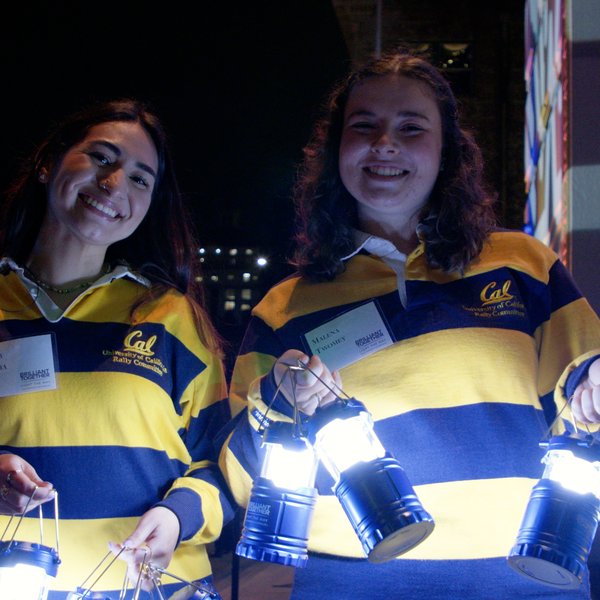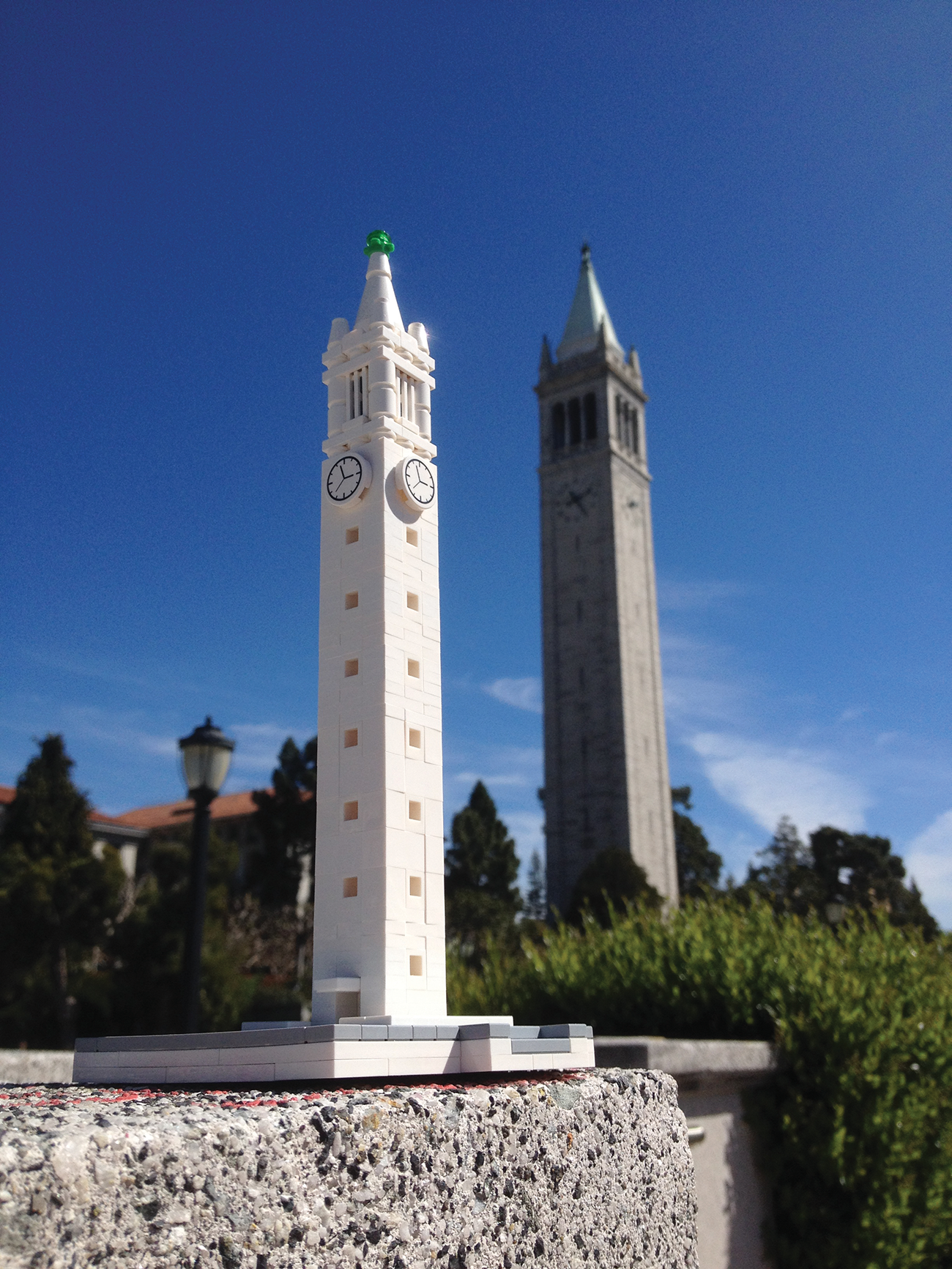
Architecture grad Michael Lin ’01 lobbied to turn the campus’s 307-foot-tall Campanile into a 10-inch LEGO novelty.
In 2005, Jill Banfield, a professor of earth and planetary science, stumbled upon a mystery — strange segments of bacterial DNA that were palindromes, base pairs that read the same way in both directions. While she wasn’t the first person to notice the segments, she met with Jennifer Doudna, professor of molecular and cell biology, and together they wondered: Did these tiny riddles serve a function, or were they “junk DNA” with no apparent use?
That conversation eventually led Doudna to a 2012 discovery that, in less than three years, has sparked a remarkable revolution in genetics. One lesson has become clear — the often unseen, overlooked, or seemingly innocuous little things can be crucial.
In this section, we share stories of little things that make a big impact. A minute salamander with a lot to say about global warming. Stardust grains that might shed light on the birth of the solar system. Tiny houses that solve critical cost, space, and energy concerns.
In a place as big as Berkeley, it’s often the little things that matter.
The tiniest pair of scissors you’ll never see is shredding the time it takes for researchers to explore new gene therapies — and striking a significant blow in the fight against genetic disease.
In 2012, Jennifer Doudna, who holds the Li Ka Shing Chancellor’s Chair in Biomedical and Health Sciences and is a Howard Hughes Medical Institute investigator at Berkeley, co-invented a revolutionary DNA-editing technology with Emmanuelle Charpentier, now at Germany’s Helmholtz Centre for Infection Research. These “scissors,” called CRISPR/Cas9, can precisely target and cut DNA to insert genes into cells, significantly simplifying a once pricey, complex procedure for modifying defective genes in a lab.
“We now have a very easy, very fast, and very efficient technique for rewriting the genome, which allows us to do experiments that have been impossible before,” says Doudna. Animal strains that mimic a human disease can be developed in weeks — versus the year or more that it used to take — in order to test new therapies. The new technology is also casting light on how specific genes function.
An explosion of possibility
This tiny tool in the arsenal of genetic research has burst in popularity. Investigators are using Cas9 to explore the genetic roots of problems as diverse as sickle-cell anemia, diabetes, cystic fibrosis, AIDS, and depression. Others are adapting it to produce biofuels and pest- and drought-resistant wheat. And it has led to at least three startups, several international meetings, and more than 125 papers.
Here at home, the groundbreaking work has spawned the Innovative Genomics Initiative (IGI), a bold new partnership with UC San Francisco that launched in 2014. It is led by Doudna and supported by a $10 million gift from the Li Ka Shing Foundation to establish the Li Ka Shing Center for Genomic Engineering and a faculty chair. Industry collaborators and startup funds from both universities also support IGI. The new hub is dedicated to expanding the research and technology in both the academic and commercial communities.
“It is a great privilege for my foundation to engage with two world-class public institutions in this quest for the holy grail to fight genetic diseases,” says foundation chairman Li Ka-shing.
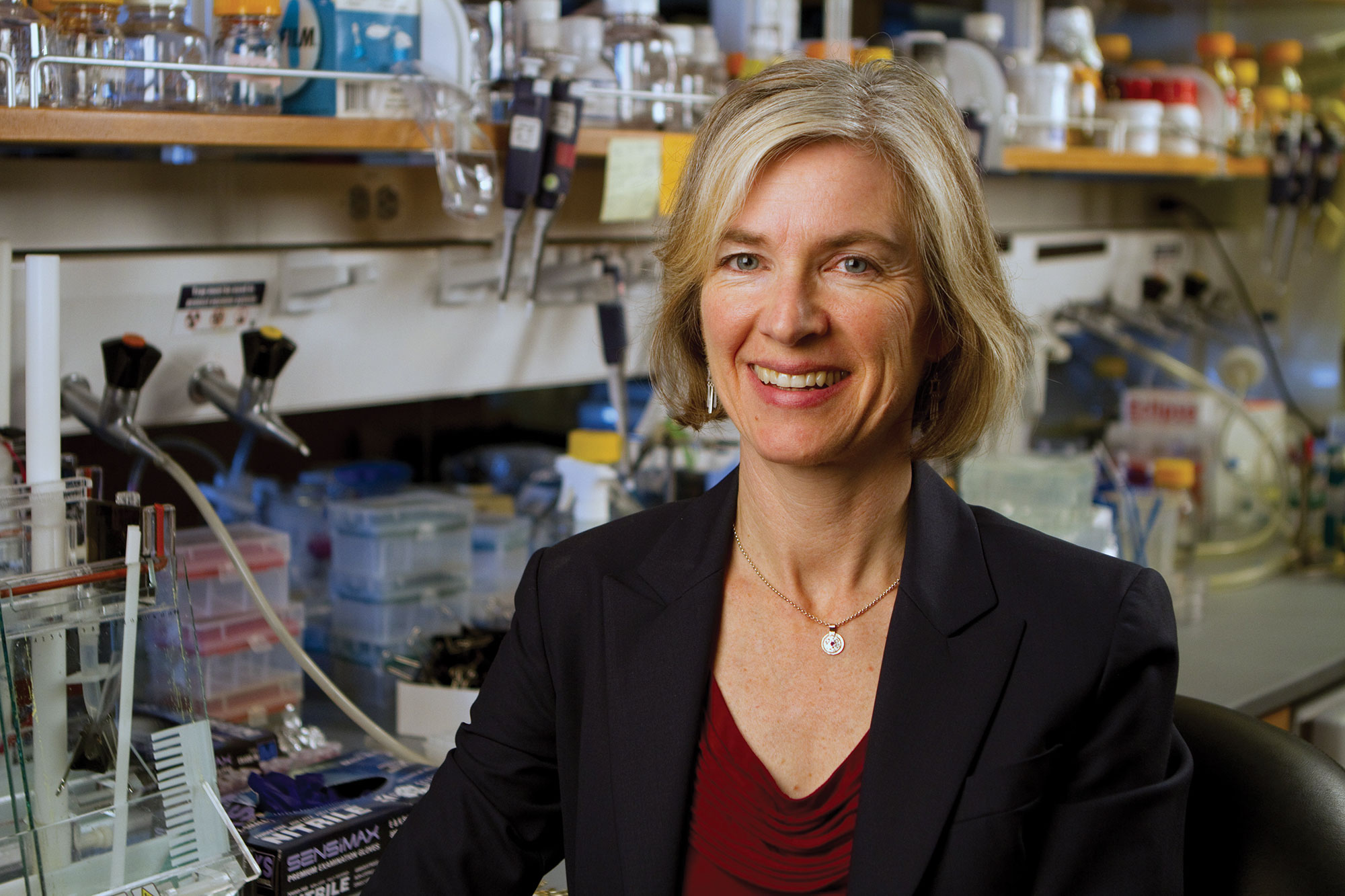
Photo: Public Affairs
Praise and caution
Awards for Doudna’s breakthrough discovery are stacking up quickly. Last February she received the Lurie Prize in the Biomedical Sciences from the Foundation for the National Institutes of Health. In November she won the 2015 Breakthrough Prize in Life Sciences, which included a $3 million award. And in December, she was one of three Berkeley professors to be named a fellow of the National Academy of Inventors.
But Doudna is also sounding an alarm. She and 17 leading biologists recently wrote an opinion piece in Science that urges scientists to pull back the reins on the technology and engage in challenging but meaningful conversations that will help us understand its safety and surrounding issues. Curing diseases is one thing, but enhancing qualities such as beauty and intelligence — or making changes that would be passed on to future generations — raise serious ethical questions. Their thoughtful plea has caught international media attention.
Many of us own meaningful objects — a handmade quilt, pocket watch, or fragile photograph — that evoke memories of our familial past. Similarly, museums are veritable treasure chests that tell the story of life on Earth over time, and it’s up to scientists to mine these objects for clues to our past and future.
The Berkeley Natural History Museums (BNHM) is a consortium of seven museums and nine field stations offering education and research programs that are rooted in a formidable collection of more than 12 million specimens, photographs, field notes, and other objects. In addition to traditional museum activities, BNHM researchers are using the collections in massive projects — often multidisciplinary, multi-institutional, and global in scope — to unravel big mysteries. Understanding evolution. Protecting biological diversity. Forecasting how organisms and environments will adapt to climate change. Below are just a few examples of single specimens or projects that can lead to grander discoveries.
Fossils sound the alarm
The iconically beautiful ammonite, a sea creature that inhabited a horn-like coiled shell, survived three mass extinctions before meeting its final fate with the dinosaurs at the end of the Cretaceous Period 65 million years ago. These and other fossils curated by the University of California Museum of Paleontology allow scientists to travel back in time to study how past periods of global change, in which the Earth and all of its processes underwent dramatic, unalterable shifts, affected life. Why should that matter? Because hindsight is a powerful tool in helping scientists and policymakers respond to what’s down the road. While history has proven that change is inevitable — five mass extinctions have occurred so far — today’s changes are happening at a far faster clip, heading toward what some are calling the sixth mass extinction. Digging into the fossils will lead to stronger predictive models on which species might die off, move, or adapt.
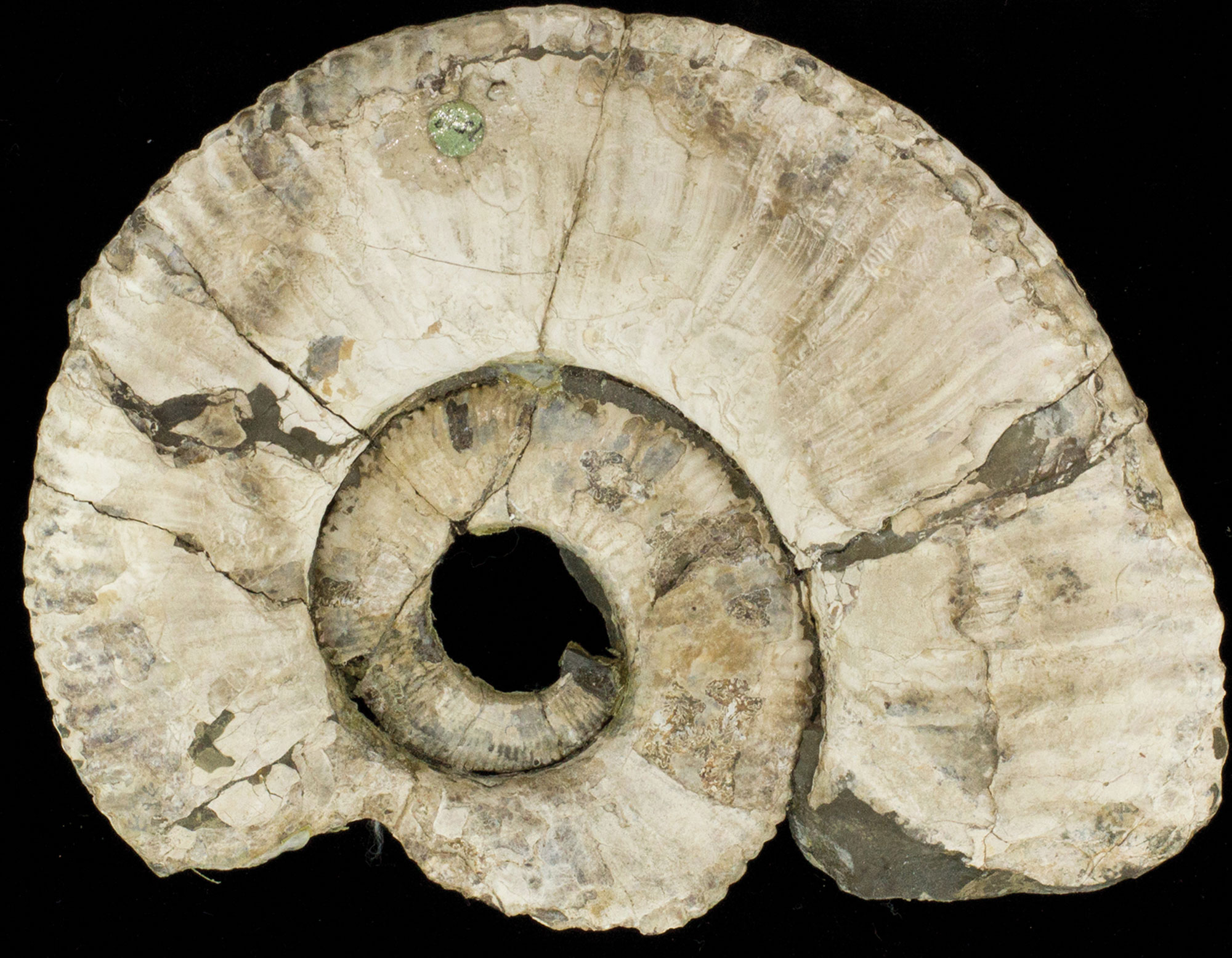
© 2013 University of California Museum of Paleontology
Add water and watch it grow
Mosses are easy to miss with their dainty size, yet they imbue our yards and forests with a soft, green woolliness that borders on magical. Dating back to the dawn of land plants, mosses and their bryophyte cousins are some of nature’s true survivors. While most plants die without water, mosses dry up completely in meager times, then spring back to life at the first hint of rain, a trait called desiccation tolerance. Brent Mishler, professor of integrative biology and director of the University and Jepson Herbaria, studies how this works. Understanding the molecular mechanisms that enable mosses to adapt to dehydration, he says, could have greater implications for other plants that must survive on increasingly drier lands. It could also offer new strategies for improving how major crops tolerate a deficit of water — potentially elevating moss in the drought and hunger debate.
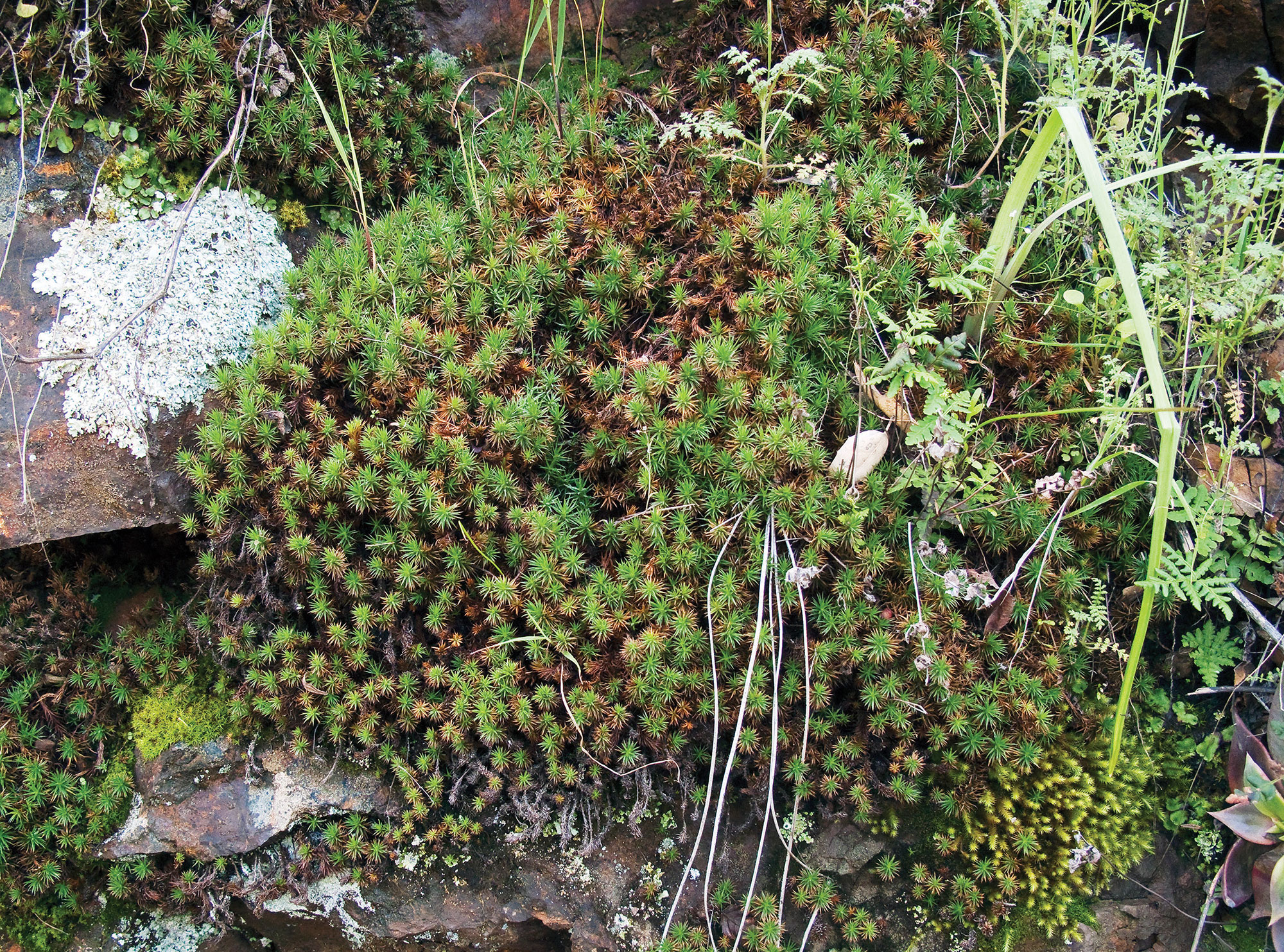
Photo: John Game
Salamanders and a warming world
In the cloud forests of Costa Rica, hidden in tangled moss balls that dangle from the canopy, lives a minute salamander whose hatchlings measure a mere 8 millimeters long. While only a handful of adults and eggs have ever been found, this species (Bolitoglossa diminuta) is part of a wide swath of Central American salamanders that are in steep decline. David Wake, professor emeritus of integrative biology and a longtime curator of the Museum of Vertebrate Zoology, and his colleagues compared records they had acquired over several decades. They speculate that global warming is the cause. Salamanders need moist, cool environments to thrive, but rising temperatures are pushing them to higher, less hospitable elevations. This does not bode well for forests, which rely on these small-but-mighty amphibians to eat beetles, ants, and other insects that would otherwise release greenhouse gases by chewing up leaf litter.
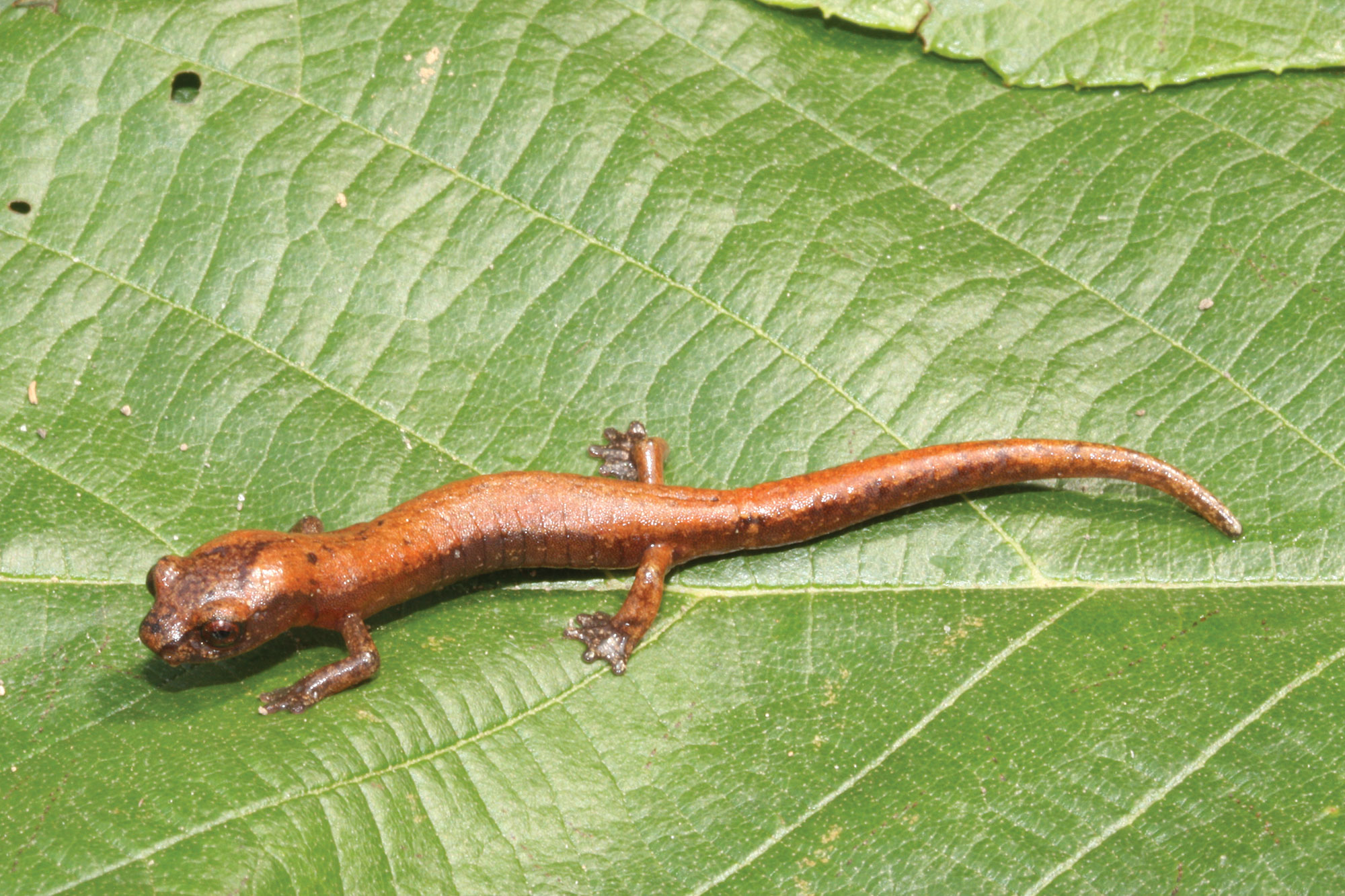
Photo: Sean Rovito
Taking notes from nature
It’s painstaking work, but somebody has to do it. In Berkeley’s Essig Museum of Entomology, undergraduates are carefully photographing and digitizing 1 million of its estimated 6 million specimens. That means removing each tiny label, which may contain 100-year-old handwritten notes; meticulously laying it next to its associated specimen; photographing them; then precisely reassembling each one to return to storage. With volunteers around the world who help transcribe the label data into an online database (Calbug), the students are contributing to an ambitious effort to understand how animals react to environmental changes. Bees, for example, are extremely sensitive and have become a key species in this work. Comparing the DNA of a 50-year-old specimen to one collected today could say a lot about how bees, plants, pollination activities, and disease have changed. And from that we can infer how urbanization, converting agricultural lands, and other threats might affect these top pollinators in the future.
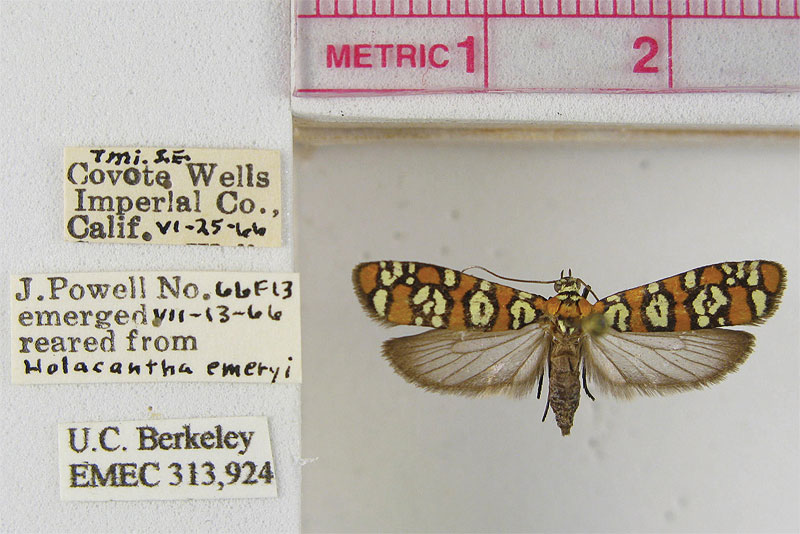
Photo: Peter Oboyski
Every day 365 million pounds of edible food are wasted in the United States, enough to fill the world’s largest football stadium to the brim. Yet 50 million Americans — one in six adults and one in four children — face hunger daily. You can spend a lot of time worrying about these huge statistics. Or you can do something about it in just two minutes, thanks to Komal Ahmad ’12.
As a student, Ahmad was shocked to see a park that serves as a sanctuary for the homeless right across the street from the university’s most popular dining hall. “It’s staggering that, in such a wealthy and powerful nation, so many people are begging on the streets,” she says. “At the same time, restaurants, supermarkets, dining halls, and offices waste so much food that could address this problem.”
While earning dual degrees in international health and development and global poverty and practice, she led the Berkeley chapter of a nonprofit that recovers and redistributes the surplus from on-campus food establishments.
Before she graduated, Ahmad also joined forces with fellow alum Andrew Finch ’11 to start Feeding Forward, an award- winning website and mobile app that use an algorithm to match people and dining establishments with large amounts of leftovers to nearby human service agencies. Says Ahmad, “I couldn’t think of a better way to use my phone than to instantly connect those with excess food to those most in need of it.” After the food has been delivered, the agency photographs people consuming it and sends the photos back to the donor.
“The business is able to clearly see the impact they made on lives by spending less than two minutes of their time feeding forward.”
Most of us think of dust as germy puffballs that plague our homes and sinuses. But for at least two discoveries at Berkeley, dust can have far greater implications.
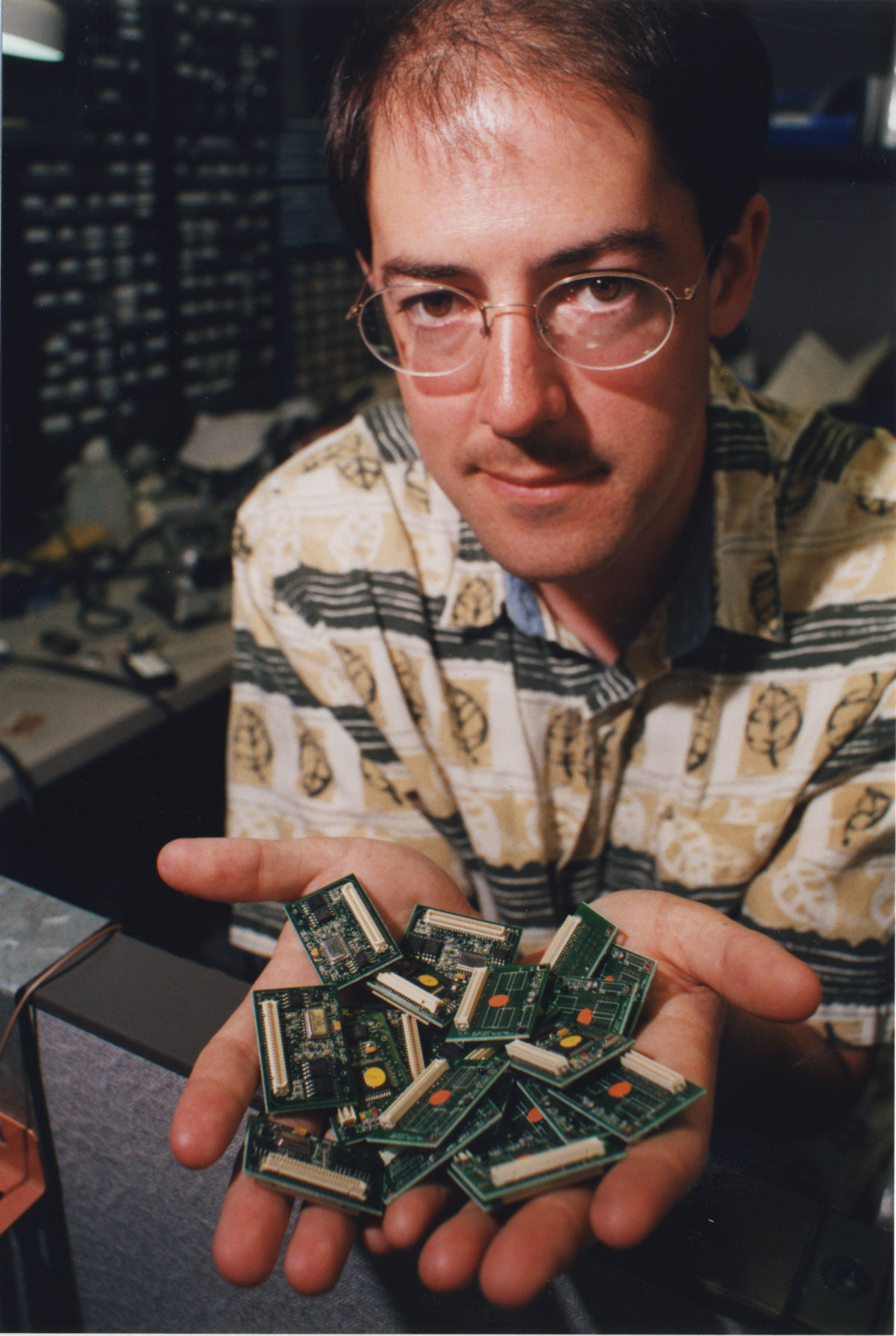
Photo: Peg Skorpinski
Kris Pister ’89, Ph.D. ’92, a professor in electrical engineering and computer sciences (EECS), never imagined dust could create such a stir. More than 15 years ago, he and his colleagues began packing sensors, microprocessors, radios, and power into progressively shrinking chips. Eventually, they unveiled a 5-cubic- millimeter wireless sensor — roughly the size of a grain of rice — that Pister aptly named “smart dust.”
Today, variations of such low-power, low-cost devices are integrated into our products, buildings, roads, and more.
They’re monitoring operations at industrial plants. They turn off the lights in empty offices, measure pollution, and improve worker safety. They’ve even begun alerting drivers to vacant parking spots.
Banking on the promise of ubiquitous sensing, Pister and EECS colleague David Culler made the hardware and software designs openly available so that developers could run with the technology. The demand was overwhelming, and thousands of developers in academia and industry spurred a new wave of research and applications.
“A lot of universities and a lot of companies contributed, but Berkeley played an absolutely central role in that evolution,” says Pister, who founded Dust Networks (purchased by Linear Technology) to commercialize his invention. In fact, Berkeley’s sensor motes have become “sort of the workhorse of the industry” — and the foundation for several international standards.
Since 2006, scientists have been combing through aerogel traps from NASA’s Stardust probe in search of interstellar dust, the stuff between the stars. The team finally struck gold, identifying seven dust motes that may well have come from beyond our solar system.
“They are very precious particles,” says Andrew Westphal Ph.D. ’92, a physicist at UC Berkeley’s Space Sciences Laboratory and the lead author of a report that appeared in Science last August. While more tests are necessary to confirm the dust’s origin, the analysis opens the door to studying the start of the solar system — and possibly life itself.
What’s most exciting is that the tiny pieces of debris — just ten thousandths of an inch — are more chemically and structurally diverse than previously imagined. Two particles look like fluffy snowflakes. Three contained sulfur compounds that some astronomers have argued don’t exist in interstellar dust. And two particles will be further analyzed for the abundance of oxygen isotopes, a stronger indication of their extrasolar origin.
“We seem to be getting our first glimpse of the surprising diversity of interstellar dust particles, which is impossible to explore through astronomical observations alone,” says Westphal, referring to telescopes.
While finding the particles in the aerogel collectors is an assiduous task, hundreds of citizen scientists (or “Dusters”) volunteered through Stardust@home to sift through more than a million images. Anna Butterworth, a Berkeley research physicist, says, “If we had had one person searching the aerogel 40 hours per week, they would have taken three years to cover once the same area searched multiple times by the Dusters.”
The world has gotten much smaller this century, with revolutions and discoveries from all corners of the globe accessible at the swipe of a finger. But the news next door often gets left behind in the big-media scramble. One significant response to this trend has been the establishment of hyperlocal news sources such as Richmond Confidential and Oakland North, both run by students in the Graduate School of Journalism, and Mission Loc@l, which started at Berkeley but has since become an independent entity. “Hyperlocal, web-based journalism is a needed innovation in the aftermath of divestment by media companies in their local bureaus,” says J-school lecturer Robert Rogers, who serves as an editor on Richmond Confidential.
The sites begun at Berkeley have shone much-needed light on historically impoverished, underserved areas.
They have also grown in regional and international stature since funding from the Ford Foundation created them in 2008 and 2009. (Berkeley’s Hyperlocal News Fund now supports both.) Richmond Confidential had more than 500,000 page views in 2014 and garnered notice from The Guardian, the Los Angeles Times, and Moyers & Company during last November’s elections. Oakland North had more than 450,000 views in 2014. Many used it as their go-to news source during Occupy Oakland, and its stories have been reprinted in the East Bay Express and elsewhere.
It’s not just the reading public that benefits from these hyperlocal outlets. “The students come into high-volume, high- impact, intense news environments where complicated, impactful events are constantly unfolding,” says Rogers. “And it’s within this theater that students are able to hone their skills and learn basic journalistic techniques, ethics, and cross- platform publishing skills. It is, by its very nature, a service-learning project of the highest order.”
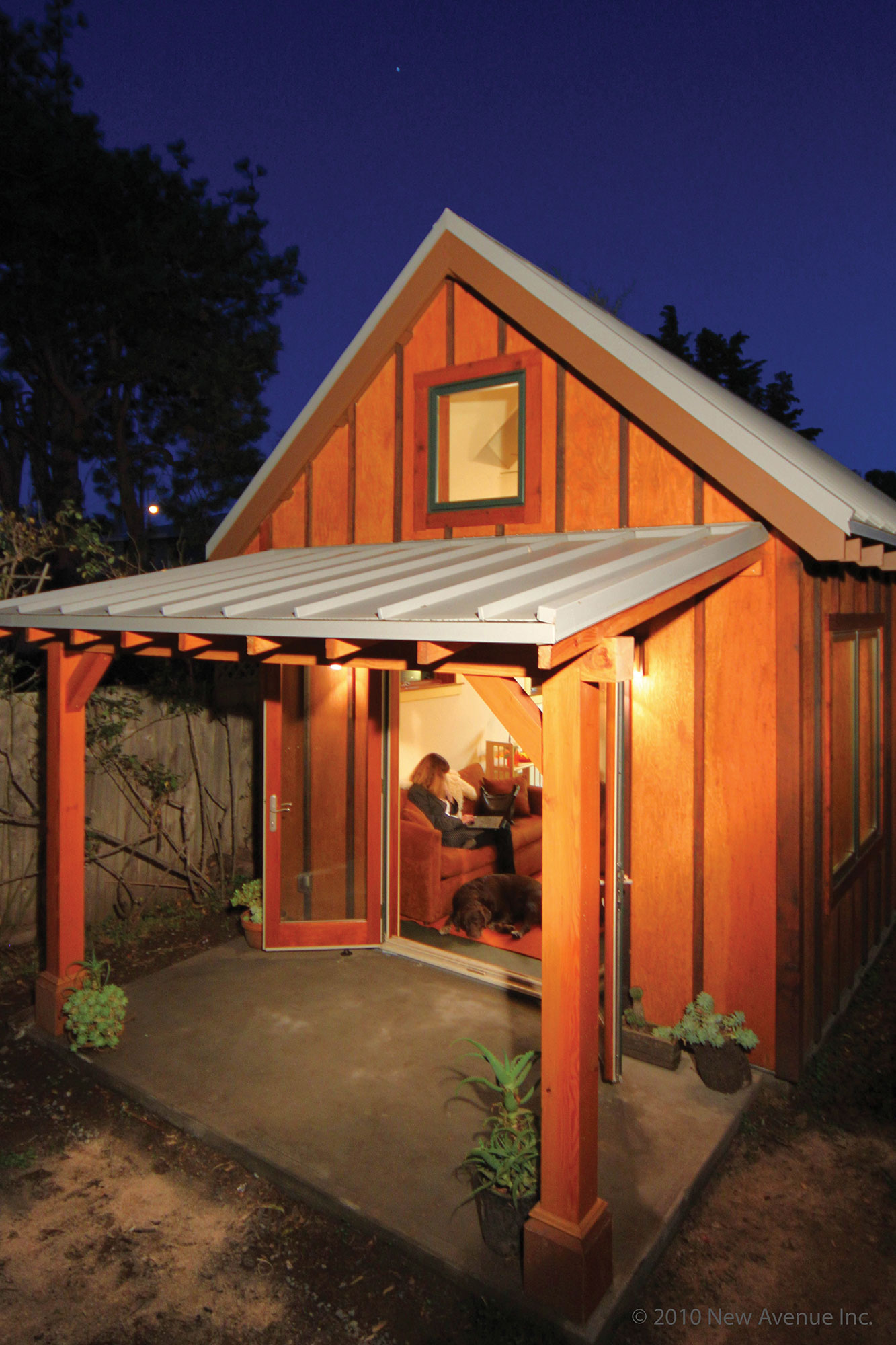
Photo: New Avenue
Call it a booming crisis: between the tech explosion and the Baby Boomers now living alone while aging in place, Bay Area housing is stretched. Leave it to Kevin Casey M.B.A. ’09 to come up with an effective — albeit tiny — solution. While he was studying at the Haas School of Business, the financial crisis peaked and, along with it, the last housing crisis. Old-fashioned, door-to-door canvassing helped him determine that 30 percent of single-family homeowners wanted to add extra space for extended family. “That’s when I said, wow, this is the future of housing: single-family homes are going to transform into multigenerational homes, and we can build some software that makes it easier for people to do that.”
Casey’s company, New Avenue, creates custom 300- to 1,000-square-foot accessory dwellings, a.k.a. “tiny houses.” Their website provides a structured process through which clients can gather ideas, estimate costs, find architects and contractors, and track timelines. New Avenue’s designs are just as efficient, making the most of a small footprint with lofts, vaulted ceilings, more light, and other features. Kitchens, bathrooms, and other heavily used areas get bigger and easier to navigate for older residents.
Mona Cain had been living alone in a 2,400-square-foot house when her daughter Lisa Cain began looking for a place that could accommodate the entire family. “We originally started looking for duplexes,” says Lisa, “but either the whole thing was a fixer-upper or there just wasn’t the right configuration of space.” Today Mona lives in her daughter’s backyard in a 610-square-foot home that accommodates all of her needs.
“When you realize,” says Casey, “that suburban sprawl, traffic problems, affordability, all of these problems can be solved simply by providing a software that enables people to do what they want to do… that’s when it becomes radical.”
In the labyrinthine shops and workstations of Dr. Xiang Zhang’s young engineering team, light moves backwards, powers minuscule motors, and even bends around objects to render them invisible.
It might sound like something out of a comic book, but Zhang’s team of more than 30 Ph.D. students, postdocs, and visiting scientists is very real, exploring the cutting edge of the relatively new field of metamaterials.
It’s called the XLab, and was named as such by Zhang “not because we’re mutants, but because we’re really looking for nontraditional research topics. X stands for explore, for experiment, for excellence.”
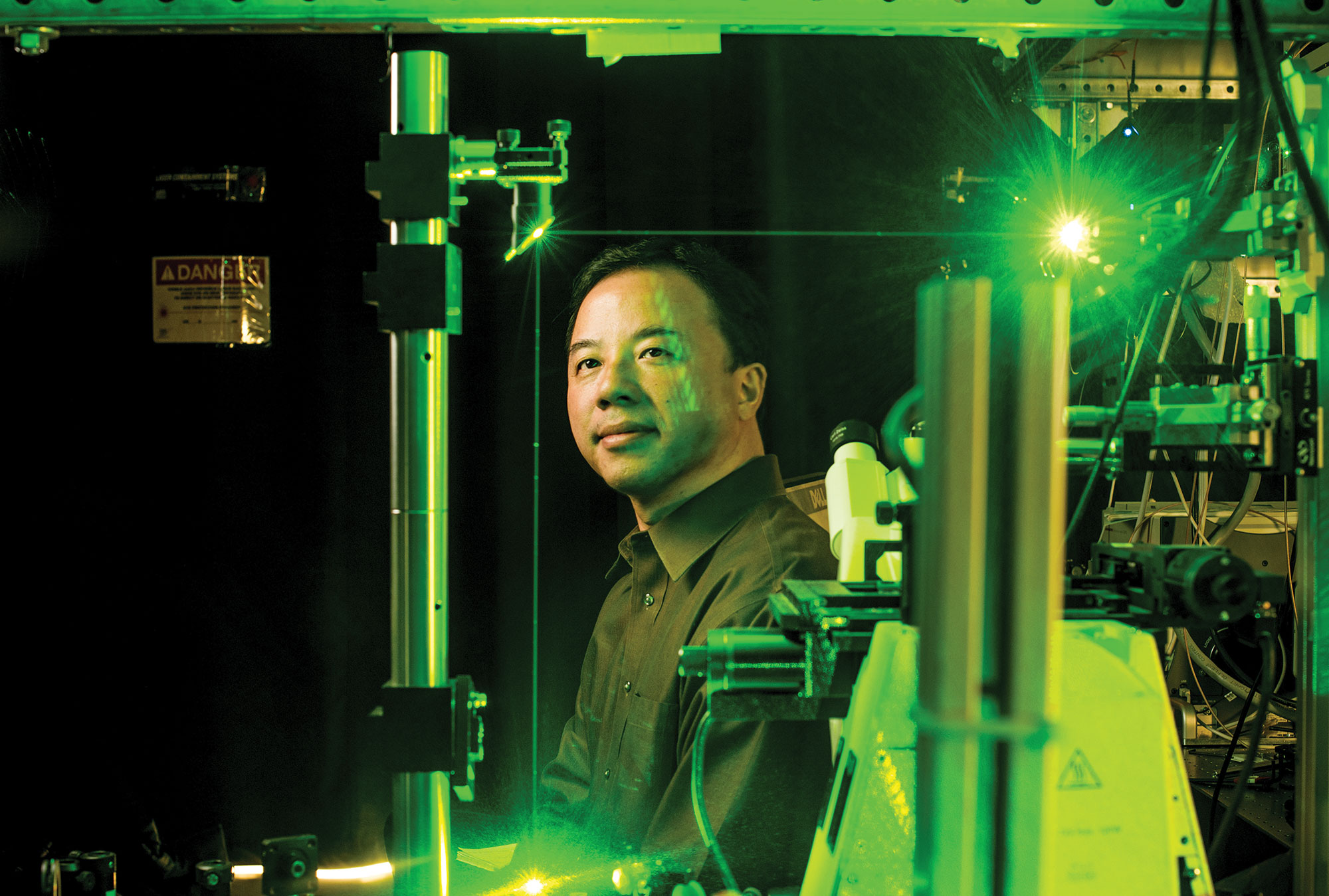
Photo: Noah Berger
To make a metamaterial, compounds not normally used together are paired up on the nanoscale, then further engineered — by layering them in a certain shape, for example, or drilling into them a repeating pattern of holes — so that whatever passes through them (light, sound, or electrons) will move in a new way. Zhang, who holds the Ernest S. Kuh Chair in Engineering, focuses on photonic metamaterials — tiny- but-mighty tricks of the light. Some of the
XLab’s metamaterials allow light rays to pass through material at a radically different angle; this motion can speed up the light, useful in the creation of “superlenses” whose extraordinarily high resolution could result in extremely sensitive biomedical detection and imaging. Others act as mini motors called “light mills” that power very, very small bots that can manipulate DNA, harvest solar light, and more.
“Everything we do begins in nature,” says Zhang. But the resulting materials — though not science fiction — perform feats burgeoning on the supernatural.
tiny Twain
Many visitors know the life-size bronze sculpture of Mark Twain that beckons passersby in Doe Library to join him for a photo opp. But few visitors have seen the tiny replica of the statue that sits inside the Morrison Library next door.
tiny legume
Lentils are cheap, yummy, and nutritious. But they could also help restore American farmlands depleted by decades of industrial agriculture, claims a new book (Lentil Underground) by Berkeley researcher Liz Carlisle.
tiny mushroom
For the first time in 30 years, a new species of mushroom was discovered last fall — right here on campus. The researchers who found it, Else Vellinga and Nhu Nguyen, described it as a beautiful black “elfin saddle” associated with oaks.
tiny bear
Bear statues of all shapes and sizes dot Berkeley’s grounds, but the tiniest one is carved into the stone over the door of South Hall, the campus’s first (1873) and oldest surviving building.
tiny history
Nuclear scientists recently confirmed that a tiny speck of plutonium safely secured on campus came from the Manhattan Project, which involved the late Berkeley chancellor and Nobel Prize-winning chemist Glenn Seaborg and gave birth to the deadly atomic bomb used in World War II.
tiny discoveries
Just a handful of small Berkeley finds over time: the chemical elements berkelium and californium; vitamins E and K; telomerase, an enzyme that promotes cell division and growth; and oncogene, the first confirmed cancer-causing gene.

